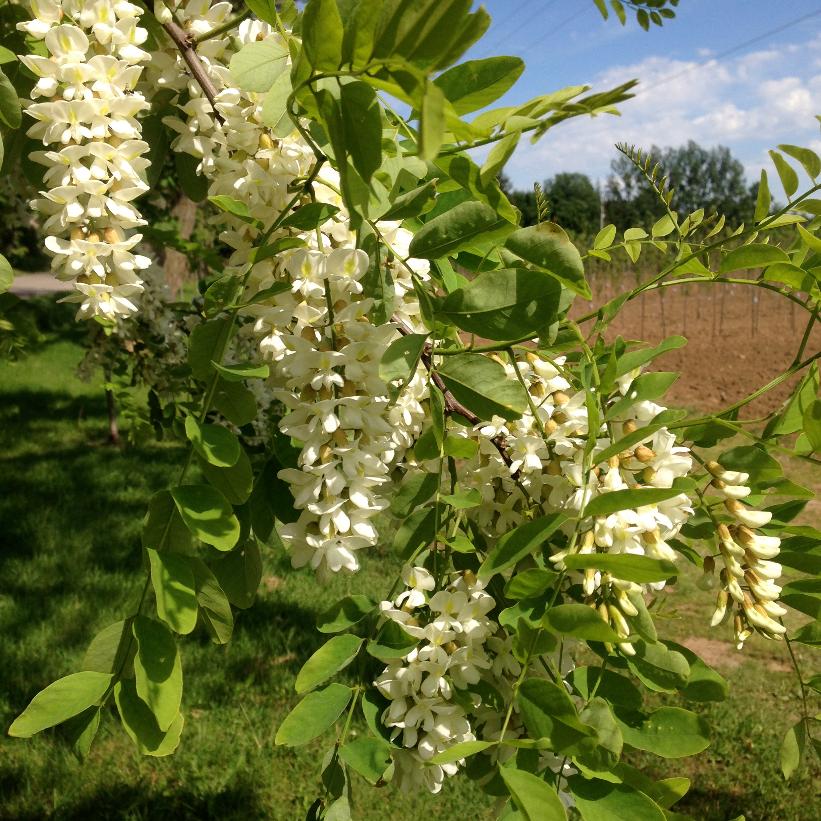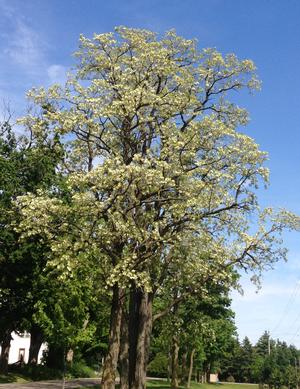ZONE:
3
COLOUR:
White
HEIGHT:
20-25 m
SPREAD:
9-10 m
 Robinia pseudoacacia - Black Locust
Robinia pseudoacacia - Black Locust
 Robinia pseudoacacia - Black Locust
Robinia pseudoacacia - Black Locust
ZONE:
3
COLOUR:
White
HEIGHT:
20-25 m
SPREAD:
9-10 m
A good selection for locations which are susceptible to drought and where other trees will not grow well. Avoid pruning in the spring when the plant may "bleed" when cut.
'Almost native' to our area in Ontario, yet listed as an invasive species, invading dry and nutrient-poor sites and lowlands, outcompeting native plants and forming dense colonies which shade-out native flora.
The flowers are a nectar source for bees and yield a high-quality honey, which is gathered in Europe and North America. The fragrant flowers are also used in perfumery.
Although the flowers are edible, the bark, leaves, and wood are toxic to human beings and livestock.